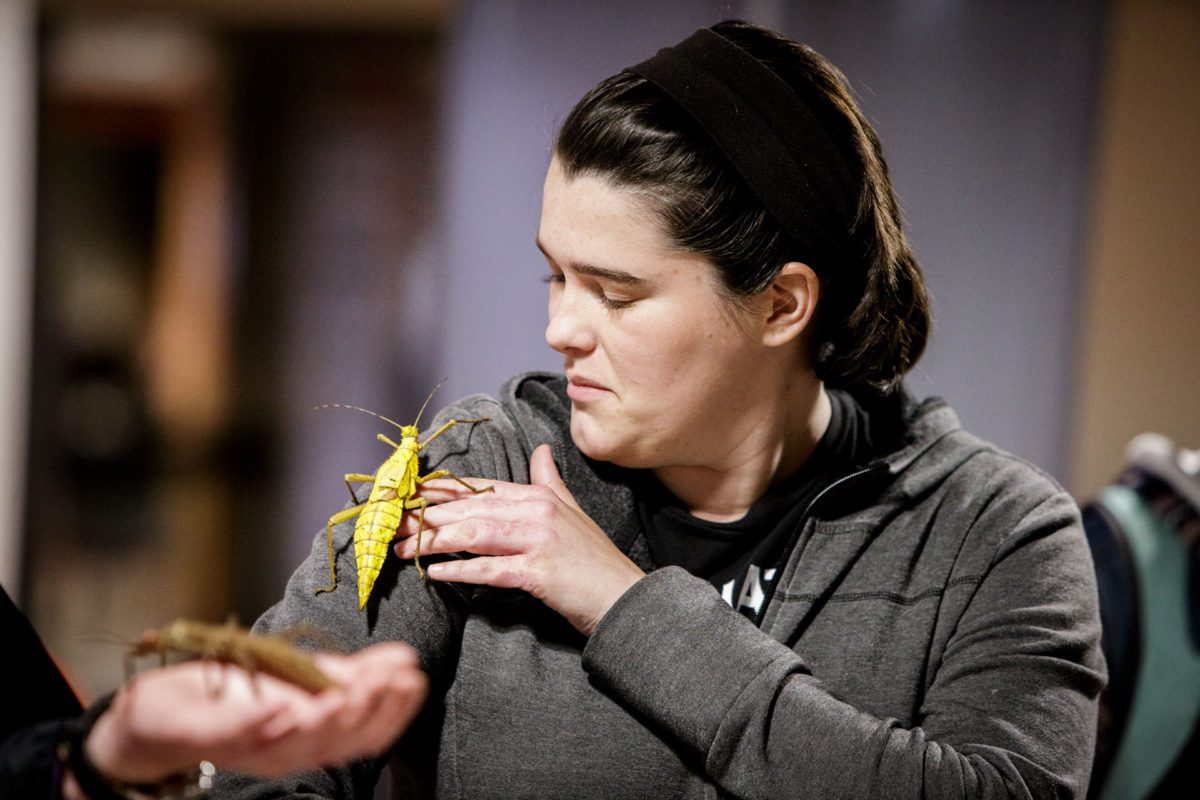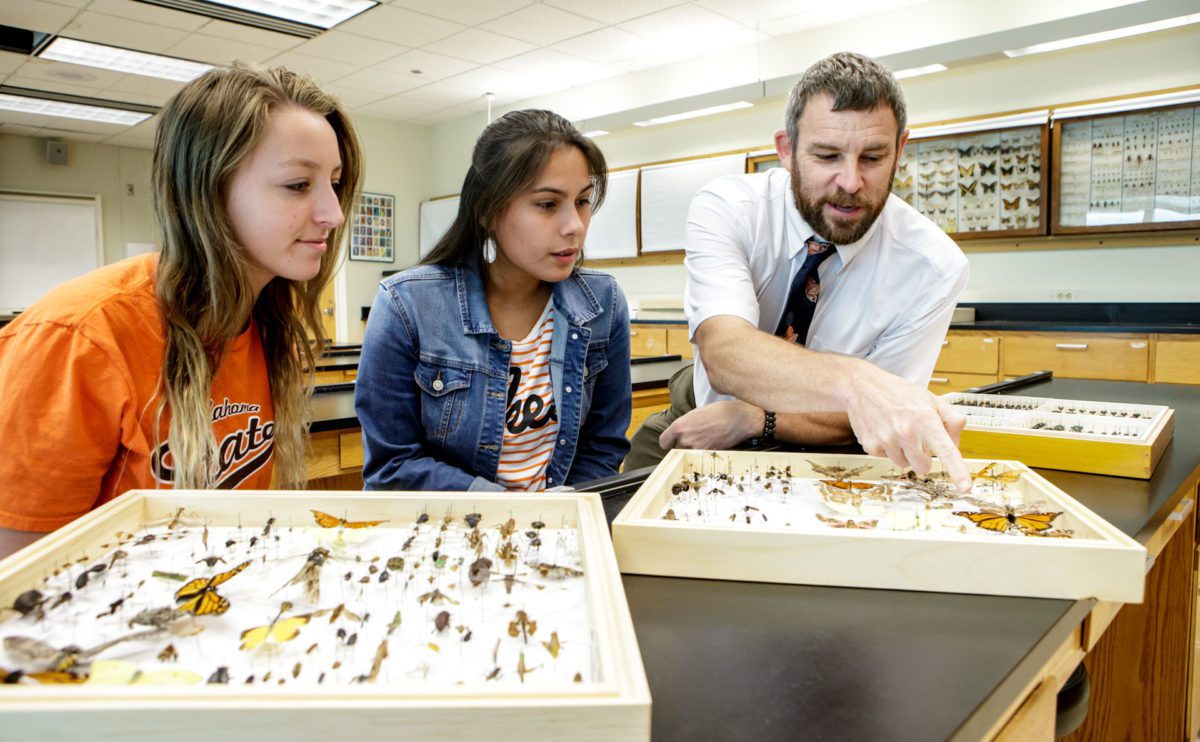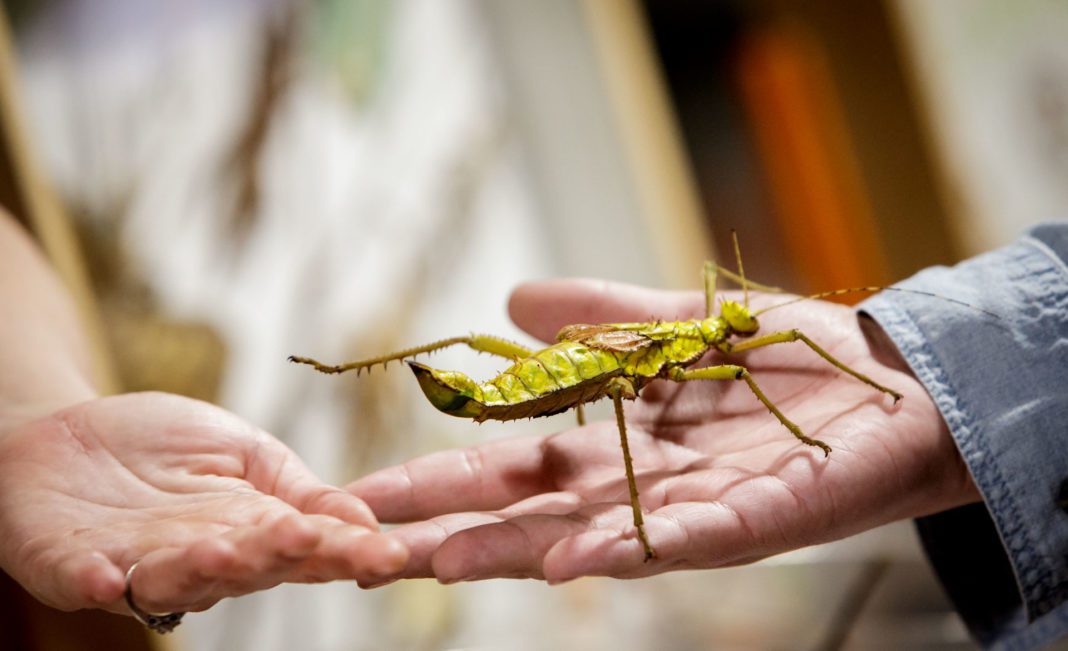You may think of bugs as a nuisance – but they provide the world with $70 billion in services and account for 85% of Earth’s animal life. About 35% of the world’s food crops depend on pollinators to reproduce, with 100,000 insects pollinating 250,000 kinds of flowering plants. And some insects are natural predators, eliminating pests that harm food crops.
“The creepy thing is there’s more than a million kinds of bugs that scientists know about,” says Wyatt Hoback, Ph.D., an Oklahoma State University professor of entomology and plant pathology. “Insects are the Jekyll and Hyde of organisms, eating 20% of the world’s food production, but generating four out of five bites of our food. Caterpillars are the worst pests for crops, but they become beautiful butterflies, which help pollinate. And insects are the deadliest animal on the planet, transmitting diseases like malaria – the planet’s deadliest disease – and killing one million humans annually. Yet insects such as dung beetles are important.”
Hoback says that entomology is “a super important degree. You can do anything with the degree. A good entomology student needs to be curious and needs to be creative, looking to solve applied problems.”
Due to history-insect-related issues after World War II that created a false sense of security, Hoback says only a handful of university entomology programs survived. Why? Because entomologists did a good job of killing bugs. So, funding and training for entomologists shriveled up.
But OSU’s Department of Entomology and Pathology provides one of those few degree programs. Defining entomology as “the study of the most numerous and diverse form of life on Earth: insects,” the program allows students to explore the diversity of nature by studying arthropods and their interactions with plants, animals and human culture.
Majors include bioforensics; insect biology and ecology; and pre-veterinary and pre-medical services, with minors in entomology and pest management. OSU offers two master’s and two doctoral degree options, as well. Interactive learning, hands-on opportunities and possible department employment prepare students for careers.
Entomologists, simply put, eliminate bad bugs while enabling good bugs, so there’s a plethora of entomology-related careers. Hoback says insects cause human diseases, leading students to medical careers. And they cause animal diseases, pointing to veterinarian careers. A sampling of other careers include: agri-chemical industry researcher; conservation technician; environmental consultant; epidemiologist; extension educator; forensic scientist; insect diagnostician; military entomologist; museum curator; and pest control operator/owner.
OSU’s Plant Disease and Insect Diagnostic Laboratory (PDIDL) provides accurate diagnoses of plant diseases and insect pests, as well as how to control them. The PDIDL offers plant disease and insect identification services to extension agents, individuals, consultants and commercial producers.




Photos courtesy OSU
Insect Adventures
Learning about bugs is cool on OSU’s Stillwater campus, where OSU Extension’s Insect Adventure is one of the nation’s largest interactive live-arthropod exhibits. The exhibit offers faculty-guided research projects in forensics, medical/veterinary sciences, ecology, conservation, stored products and applied agriculture.
As Oklahoma’s only live insect petting zoo, the venue welcomes the public. Guests may hold a foot-long millipede or pet a tarantula, and interact with more than 25 species of living arthropods.

























